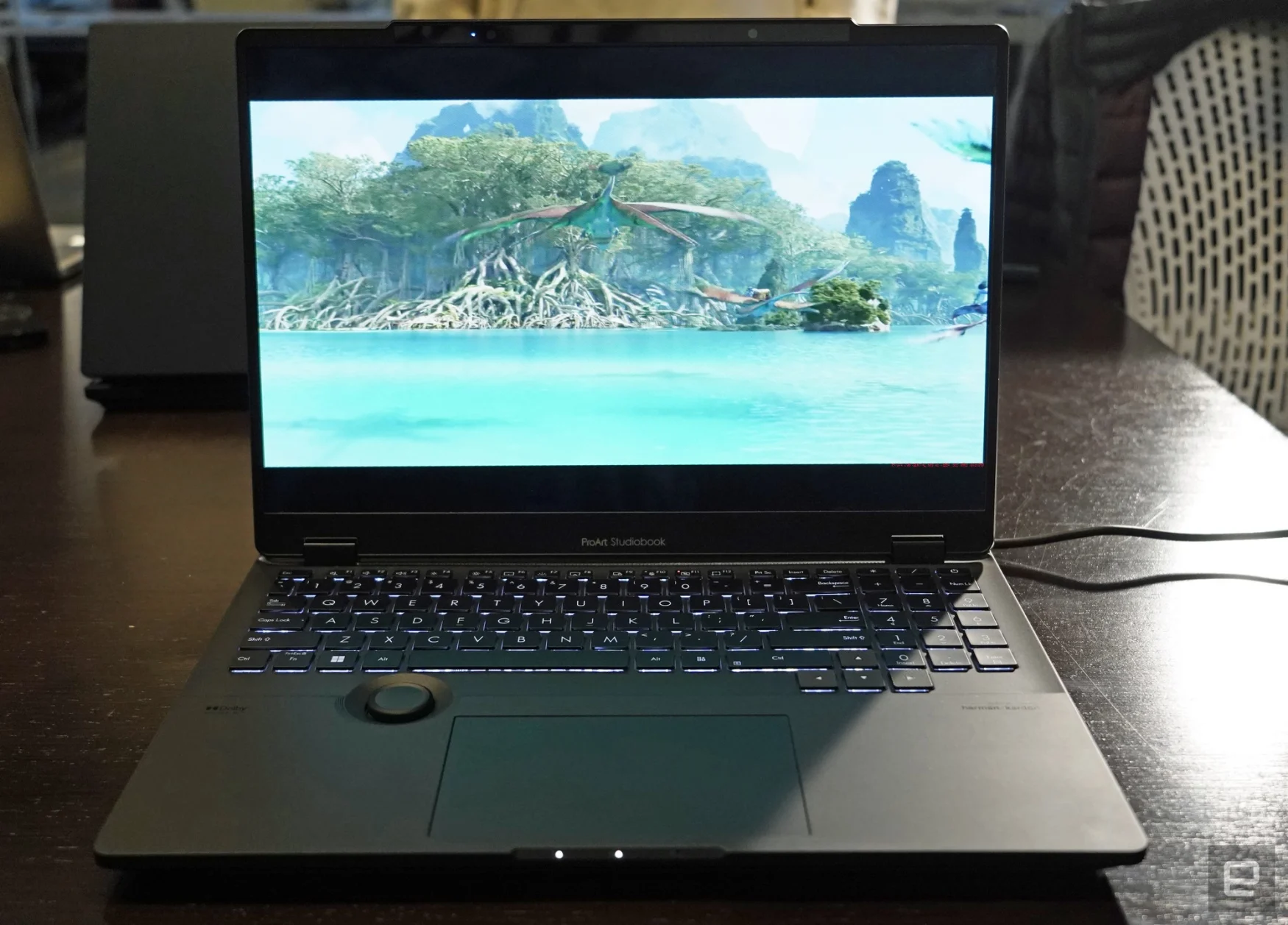ASUS dives into glasses-free 3D with the ProArt StudioBook 16 | Engadget
ASUS is taking a stab at glasses-free 3D in 2023, starting with its new ProArt StudioBook laptop. It sports a 16-inch, 3.2K OLED panel that has the ability to flip into 3D at the touch of a button. This feature, which ASUS calls Spatial Vision, uses eye-tracking and a lenticular lens to deliver two separate images to your eyes. That lets you view things like 3D models and movies with the same amount of depth that you’d expect from a typical 3D screen with glasses.
Now this isn’t exactly new — Acer has been hyping up its SpatialLabs technology for years, which was most recently featured in a gaming notebook. ASUS appears to be following a similar path by focusing on professional users first. Aside from the ProArt StudioBook 16 3D OLED, Spatial Vision will also make its way to a slightly less premium VivoBook Pro mode, which will hopefully cost less. Pricing details aren’t available just yet, but you can expect to pay a great deal more than a typical 2D laptop.
Based on a brief demo with ASUS, Spatial Vision looked impressive on the StudioBook 16, though it took a few tries to get it working properly. It turns out ASUS’s eye-tracking technology couldn’t deal with a face mask easily, which makes me concerned about using this tech in a crowded office. Once I removed my mask though, I was able to view a variety of 3D models up close. When I moved my head side to side, the eye-tracking sensors rotated the models, almost as if they were physically in the room with me. I didn’t get to try out any 3D gaming with the StudioBook, but it’ll be interesting to see how shooters work with Spatial Vision.

Devindra Hardawar/Engadget
Personally, I’m excited about the possibilities of glasses-free 3D while watching movies. I was able to see 3D cinema-like depth while viewing the trailer from Avatar: The Way of Water. It was a reminder that 3D can be more than a gimmick when done correctly. Unfortunately, Spatial Vision only supports one viewer at a time, but that’s true of every glasses-free 3D solution. It’s hard enough to track one person’s eyes to keep perspective — adding more people is exponentially more difficult.

Subscribe to the Engadget Deals Newsletter
Great deals on consumer electronics delivered straight to your inbox, curated by Engadget’s editorial team. See latest

Please enter a valid email address
Please select a newsletter
By subscribing, you are agreeing to Engadget’s Terms and Privacy Policy.
Beyond its 3D capabilities, the ASUS ProArt StudioBook 16 3D OLED looks like a premium workhorse laptop. It’s powered by Intel’s new 13th-gen HX CPUs, as well as NVIDIA’s RTX 4000 graphics. It can fit up to 64GB of DDR5 RAM and 8TB of PCIe 4.0 SSD storage, and thankfully there are two user-replaceable slots for memory and storage. The ProArt’s OLED screen can also reach up to 120Hz, which makes it useful for late-night gaming together with its NVIDIA hardware.
Even though Spatial Vision looks cool, it’s still unclear if people actually want glasses-free 3D. I’ve talked to 3D artists who prefer having a VR headset nearby to fully explore their models, they don’t see much value in getting a bit of depth right on their screens. But I don’t blame ASUS, Acer and other companies for exploring the possibilities of this technology — when it works well, it looks absolutely magical.






